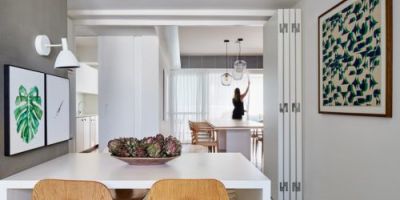它被称为“弹性设计”。一种设计方法,旨在抵御灾难的冲击,如果可能的话,还可以拯救人类的生命。世界上越来越多的年轻设计师意识到气候变化将对环境造成的影响,他们选择了这条路。一方面有些人出发——带着一丝趣味的家具变成救生设备,像瑞士集体Superlife产生了准备收集:地毯成为救生带,一盏落地灯,可以用作一个火炬在紧急情况下,落下提供躲避的桌子。另一方面,有些想法是从特定的情况中产生的。例子吗?救生舱由两名西雅图航空航天工程师在2004年印度洋灾难后设计,在发生海啸或类似事件时,它可以容纳两到十个人;2017年墨西哥地震后,工程师雷纳尔多·贝拉·科利诺(Reynaldo Vela Coreno)发明了一个蛋形的荚膜K107,它既能承受建筑物的倒塌,又能在发生小火灾和煤气泄漏的情况下保护人类生命。例如:在城市中心,也有可能考虑到发生在农村地区的火灾(只要想想最近发生在巴黎圣母院的火灾就够了)。大城市越来越“垂直”,如果在火灾中总是很难幸存,那么在摩天大楼中几乎是不可能的。出于这个原因,广东工业大学的一群设计师在刘翔的带领下设计出了“网卫士”,这是一种四旋翼无人机,它能抓住一个网,让人跳起来,然后被带到安全地带。类似的想法还有爱德华·萨姆森(Edouard Samson)的Argonaute,它是一个附在建筑物一侧的逃生舱,如果有必要疏散的话,可以由一架自动四轴飞行器搭载并带走。缺少水和电,以及寻找避难所的需要,是撤离者面临的首要问题。日本设计工作室Nendo推出了一款利用离心力的便携式动力银行Denqul。它可以单手旋转充电,在没有电力供应的情况下为智能手机供电。服装也可以设计来应对特殊事件。大卫·伯塞尔(David Bursell)设计的缓步行走夹克就是一个例子。这款夹克也可以用作紧急避难所,用于搬运重物和收集雨水。《闪烁:城市安全飞行照明伴侣》是哈佛大学开发的一种移动城市照明系统,由太阳能供电。虽然一些解决方案旨在一次拯救一个人的生命,并作为个人安全网,但另一些方案是为公共空间设计的。比如伊朗伊斯法罕艺术大学的一群学生设计的路灯Naji,它的底部装有漂浮的元素,人们可以在洪水中紧紧抓住它。“邻居中心”是在地震多发城市温哥华市政府的支持下建成的,它是一个“蘑菇状”的雨棚,在发生灾难性事件时为社区提供饮用水和电力。每年平均有9万人死于自然灾害,另有1.6亿人受到自然灾害的影响,往往无家可归。这就是为什么联合国举办了“弹性房屋挑战赛”,这是一项为建造成本不到1万美元的可持续房屋而举办的竞赛。都灵理工学院(Turin Polytechnic)的核心屋(Core House)就是其中之一,它是一个可以漂浮的临时竹屋。救生舱是由航空级铝制成的球形吊舱,用于在无法疏散时保护人们免受海啸、龙卷风、飓风、地震和风暴的袭击。


It’s known as “resilient design”. An approach to design that aims to withstand the shock of disasters, and if possible, save human lives. It is a road taken by a growing number of young designers in the world, aware of the repercussions that climate change is going to have on the environment. On the one hand there are those who – with a hint of playfulness – are setting out to turn pieces of furniture into lifesaving devices, like the Swiss collective Superlife which has produced the Be Ready collection: a rug that becomes a life-belt, a floor lamp that can be used as a torch in emergencies and a desk that provides shelter from falling masonry. On the other there are ideas that have sprung from specific situations. Examples? Survival Capsule, designed by two Seattle-ba
sed aerospace engineers after the Indian Ocean disaster in 2004, a sphere that can house from two to ten people in the case of a tsunami or similar event; or Capsula K107, an egg-shaped pod created by the engineer Reynaldo Vela Coreño after the Mexican earthquake of 2017, able to withstand the collapse of a building as well as preserve human life in the case of minor fires and gas leaks.Go to the galleryThe outbreaks of fire that afflict rural areas in particular are also a possibility to be co
nsidered in urban centres (it suffices to think of the recent case of Notre-Dame in Paris). Big cities are increasingly “vertical”, and if it is always hard to survive a fire, in a skyscraper it becomes almost impossible. For this reason, a group of designers at Guangdong Polytechnic, led by Liu Xiang, has created the Net Guard, a quadcopter drone that holds a net o
nto which a person can jump and be taken to safety. A similar idea is Edouard Samson’s Argonaute, an escape pod attached to the side of a building that can be picked up and carried away by an auto
nomous quadcopter should evacuation become necessary. The lack of water and electricity, and the need to find shelter, are the first problems that co
nfront evacuees. The Japanese design studio Nendo has come up with Denqul, a portable power bank that exploits centrifugal force. It can be recharged by swiveling it with one hand and used to power a smartphone in the absence of an electricity supply. Clothing too can be designed to respond to exceptio
nal events. An example is David Bursell’s Tardigrade, a jacket that can also be used as an emergency shelter, system for carrying weights and rainwater collector.Twinkle: A Flying Lighting Companion for Urban Safety is a mobile urban lighting system, powered by solar energy, developed at Harvard.While some solutions aim to save one life at a time and are intended to serve as a perso
nal safety net, others are co
nceived for public spaces. For instance Naji, designed by a group of students at the Art University of Isfahan in Iran: a streetlight with a floating element fitted to its ba
se to which people can cling in a flood. Neighbour Hub, created with the support of the municipality of Vancouver, a city prone to earthquakes, is a “mushroom-shaped” canopy that provides drinking water and electricity to the community in the case of a catastrophic event. Every year an average of 90,000 people die as a result of natural disasters and 160 million more are affected by them, often left homeless. This is why the United Nations has staged the Resilient Homes Challenge, a competition for sustainable houses which can be built for less than ten thousand dollars. Among the winners is Turin Polytechnic’s Core House, a temporary bamboo shelter that can also float.Survival Capsule, spherical pod made out of aircraft-grade aluminium, serves to protect people from the fury of tsunamis, tornados, hurricanes, earthquakes and storms when evacuation is not possible.




 24
24
 设计欣赏
设计欣赏
 行业资讯
行业资讯
 设计欣赏
设计欣赏
 设计欣赏
设计欣赏
 设计欣赏
设计欣赏
 设计欣赏
设计欣赏
 设计欣赏
设计欣赏
 设计欣赏
设计欣赏